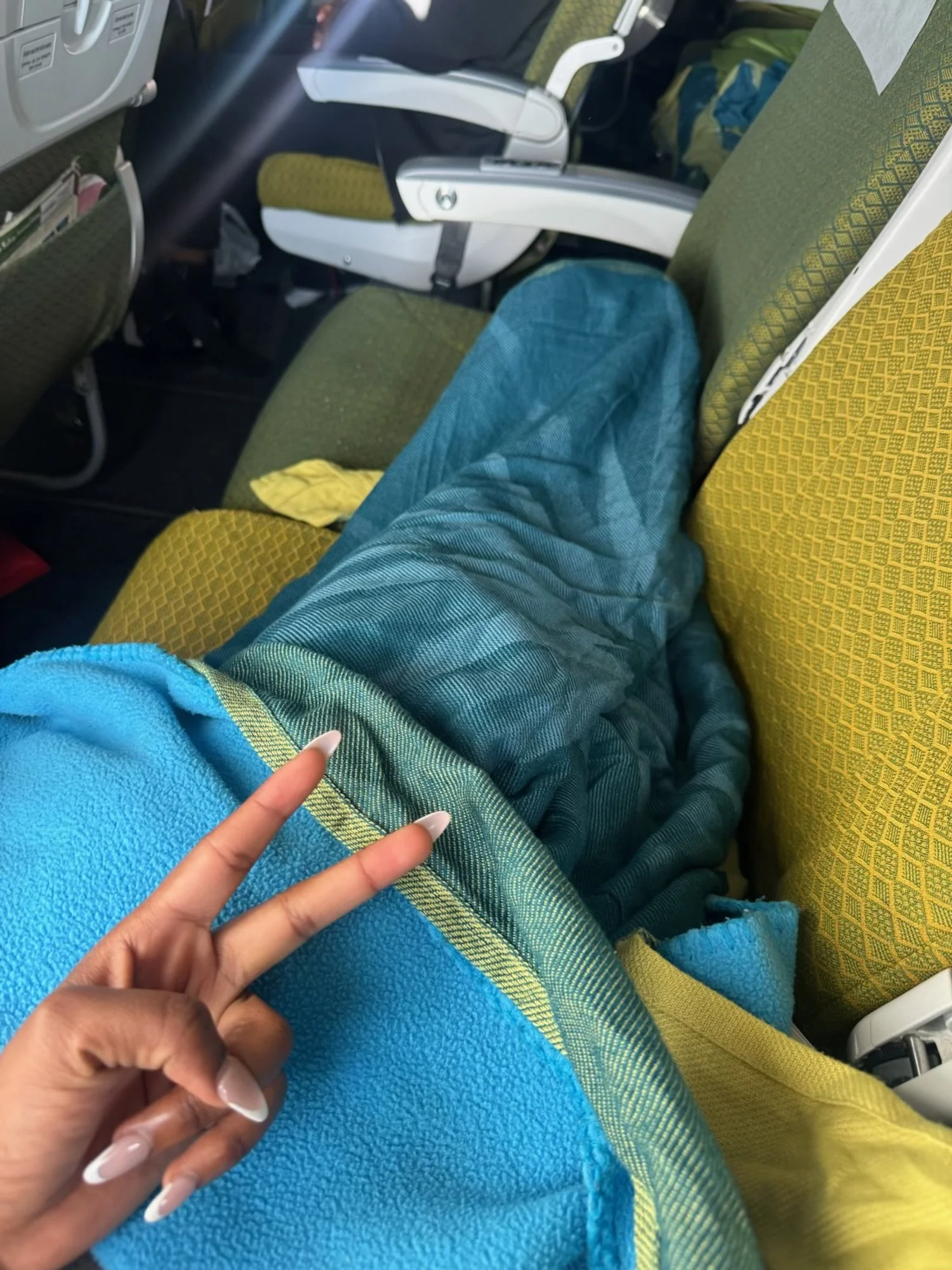2025 Rwanda Delegation— Rusi Mbabazi
International Relations ‘25
I return to Rwanda to continue deepening my understanding of the culture and history. This time, I’m especially focused on learning more about Rwanda’s progress in post-genocide mental health awareness and how communities continue healing and moving forward.
I have families and community members who experienced the horrors of 1994. I have families and community members who still live in the shadow of what happed in 1994. It is my duty as a Rwandan to learn all that I can (about pre Genocide and post Genocide Rwanda) to better serve the community and general public. It’s important to never forget what happened in 1994. It’s important to learn how the county continues to heal.
Going to Rwanda has made me more empathetic than I thought I was. Oddly speaking, I enjoyed conversating with the perpetrators. Not because I enjoyed listening to the gruesome details of the atrocities they committed but because; they were speaking. They were telling their stories, experiences and crimes.
There is power in storytelling. For a very long time in history, men did not speak about their mental health. Seeing perpetrators or victims speak of their experiences and how they were affected restores faith in the idea that the next generations will continue Rwandas tradition of forgiveness, remembrance,unity and renewal.
Day 1
Hello everyone!
Welcome to my blog 🥳🥳🥳
Today we arrived in Kigali Rwanda. We were met at the airport with our GEI family and they gave us a warm welcome.
Everyone was very exhausted from the long plane ride. From the airport, we went to Saint Paul and had lunch. We then went to exchange money. From there, we went back to the hotel and rested until dinner and then we called it a day.
Something interesting:
It rained alot in Kigali. I thought it was dry season time. I should’ve brought an umbrella ☔️ (haha)
Down below are some photos I took while on the plane and some photos of my trip!
Thank you for stopping by
Stay tuned for more updates on my journey here In Rwanda.
Day 2 - Women’s center
Hey guys, welcome back to my blog!!
Today I visited the Umutima Women’s Center.
Here is what I learned:
Founding and Vision
• Started by 18 women from various regions of the country who met in Kigali.
• Initial effort involved pooling resources to help one member, then expanding support to others.
• The goal: empower women, most of whom are single mothers, by giving them a way to work and raise their children in dignity.
• Early on, 3 members out of the 18 women had no education, so the others taught them to read and write.
Partnership and Growth
• In 2008, they met Slovenian women, shared their vision, and received funds to rent office space and purchase furniture and sewing machines.
• This led to the first 8-month sewing class.
Expanding Training
• The women asked themselves: “What if other women also want this training?”
• In 2013, they reached out to the gov to help them recruit women. The local government goes out into the community and selects women that need the trainings.
• This led to recruiting 55 women to form “Umutima Quality”, the production team. (Mutima is “heart” in Kinyarwanda)
• These women are paid monthly, though wages vary.
Programs Offered
• Literacy Class (first step for all)
• Then choose between: Sewing Class (8 months) or Hair Braiding Class (8 months, Mon–Thu, half-day: Includes hair care, braiding, cutting, washing
• Aim: help women become self-employed or find jobs.
• Participants must be over 18, often high school dropouts or rural women who moved to Kigali.
Children’s Library
• Launched in 2017, inspired by mothers bringing kids to work. Instead
Of mothers receiving training and having to bring children to school with them, the children’s library was created to provide an educational environment and opportunity for children while the mothers train.
• Library holds 3,000+ books in English, French, and Kinyarwanda.
• Promotes early literacy and learning.
Production and Culture
• Main textile used: Kitenge and cotton.
• Products include a heart label symbolizing “Umutima” (heart).
• Work hours: Mon–Fri, 8:00 to 4:30.
• Sewing class materials are not for sale—used for practice and sometimes donated.
• Embroidery workers earn 70% of the value of what they produce.
Impact
• Over 6,000 women trained.
• Offers free training and pathways to economic independence.
• Deeply rooted in community, culture, and empowerment.
Cultural Initiatives
I visited the milk bar next to the women’s center
• Milk Bar onsite: offers fresh and fermented milk (kivuguto). I got to try the milk and it was so delicious!! Many people gather in a bar to share alcohol and socialize. In the milk bar street, people gather to drink milk and socialize. Milk and cows are deeply cultural symbols in Rwanda; Used in proverbs, names, and dowries. For example, a Rwandan can say to you that your eyes are like a cows eyes. This means your eyes are as beautiful as a cows eyes.
Biggest take away: the women’s center was created to fight gender based violence and give women, especially lower income women and mothers the opportunity to learn trades and make a living. Women breaking free from societal norms and investing in themselves and learning trades is truly incredible. I pray the program continues to expand and touch more lives.
Down below are pictures from today❤️
Thank you for coming to my blog!
Day 2
Hey guys welcome back to my blog!
Today I met Annick. She was accompanying us to the prison fellowship. On the way there, we had a lot of meaningful conversation. We then landed on the work she does. She works with MHUB which is mental health Hub. They offer mental health services for workers. Most jobs pay for this service for their employees. Apart from mental health services, they also offer yoga classes which is also good for the mind, body and soul.
I asked her what motivated her to work with MHUB and she shared with me a very touching story and it goes as follows.
A few years ago, she was working as a nurse. She was caring for a a little girl who was very ill. Her family was very poor. Her mom usually spent all day with her in the hospital.
This particular day, the mom decided to leave and go home to make her daughter porridge; the little girl loved porridge and her mom had saved enough money to afford the porridge. The mom left and Annick stayed with the little girl. A couple hours went by and the child was doing great. She was doing so great and everyone was shocked because she was really ill before and wasn’t expected to recover that quick. While her mom was gone, the little girl ate potatoes and she was smiling and looking strong.
Suddenly, the little girl went into cardiac arrest and passed away. Doctors tried to resuscitate her but sadly, nothing worked.
Annick couldn’t take it. She had spent so much time with the little girl and she was confused. She wondered how the child suddenly passed when she was just doing great. She realized that the child’s temporary health improvement was the surge which is when ill patients get better before finally passing.
In the midst of all this, the little girls mother arrived which a flask of porridge. She looked so hopeful, and full of hope.
Gazing from a distance, Annick saw the mother engaging with the receptionist. She told her how she made porridge with milk for her daughter; she had the biggest smile on her face.
As Annick was grieving the loss of her patient whom she was found of, the doctor came and asked her to personally deliver the terrible news.
Annick looked at her from a distance wondering how she will deliver this terrible news, how the mother’s whole world was about to turn upside down.
Annick gathered enough courage and she went and gave the mother the worst news of her life. As any mother, she was devastated. There is no word to describe the pain a mother feels after losing a child.
After the little girls death, Annick suffered severe depression. The little girls last meal was potatoes. When she passed away, the potatoes passed through her body. Annick spent months and months without eating potatoes. She still struggles a bit because it reminds her of the terrible day she lost the little girl.
She continued to experience depression but she felt she had no one to talk to. She asked herself “we (people in healthcare) are always the one taking care of others, counseling people and healing them. But who takes care of us? Who counsels us?”
This motivated her to leave nursing and to work with MHUB. Now, she alongside great psychiatrist offer counseling services to employees in various companies all across Kigali. These services are included in most job packages so employees utilize these services free of charge.
This is truly amazing!!! It ensures employees are mentally and emotionally taken care of before taking care of others. How great would it be if all jobs offered these services.
A Journey to Healing and Forgiveness: My Visit to the Prison Fellowship and Reconciliation Village
Today, I had the honor of meeting Felix from the Prison Fellowship Rwanda, a faith-based non-governmental organization that’s been changing lives since its founding in 1995. Their mission is to help rehabilitate inmates, foster reconciliation between survivors and perpetrators of the genocide, and build a stronger, united community from the pieces of Rwanda’s painful past.
A Nation in Recovery
In the immediate aftermath of the 1994 Genocide Against the Tutsi, Rwanda saw more than 120,000 people incarcerated. Trust was nonexistent. Many inmates were scared — they feared outsiders, believing volunteers might be government spies.
But volunteers from the Prison Fellowship kept showing up patiently and consistently. They brought with them not just the Word of God, but the heart of restorative justice. Slowly, prisoners began to feel safe and open up.
The program had four core goals:
1. Encourage inmates to participate in healing sessions.
2. Help them understand and admit the truth of what they had done.
3. Create an atmosphere of safety and trust.
4. Lead them to accept responsibility, apologize, and seek forgiveness.
Slowly but surely, perpetrators began to open up. Some revealed where they had buried bodies and others asked to meet with victims’ families to apologize.
At first, over 140 inmates took part in these confessions, which led to some of the first community healing sessions. It might surprise you to know that as of now in 2025, they are still finding bodies of the victims of the 1994 Genocide against the Tutsi.
For example, when we were at the Nyamata memorial, our visit was cut short because a truck with coffins drove into the memorial.
The Truck carried victims who were located because a perpetrator confessed to their killings and helped the family locate their loved ones. Around the coffins, there were family and loved ones who were finally able to lay innocent souls to rest. After all these years, they were finally able to bury them in dignity.
From Prison to Community: A New Chapter
As prisoners began to be released, the focus shifted. The challenge now was even harder: how to heal a community where victims and perpetrators were now neighbors.
In 2003, an extraordinary idea was introduced— the Reconciliation Villages.
Between 2003 and 2008, eight villages were built, housing more than 5,000 people today. What makes these villages so powerful is that both survivors and perpetrators helped build them, side by side. These were people who once represented each other’s worst nightmares — now constructing homes, lives, and futures together. Some have even married. What started as an impossibility became a living, breathing symbol of grace.
In 2023, even Prince Charles visited one of these villages, a testament to their global significance.
Deep Healing: The Heart Work
Prison Fellowship didn’t stop at physical restoration. They understood that trauma doesn’t end with an apology. That’s why, in 2013, they launched the Community Social Healing Approach.
Groups of 15 people meet weekly for 15 weeks, focusing on six pillars:
1. Safety – Creating an emotionally secure environment
2. Trust – Rebuilding what was shattered
3. Respect – Restoring dignity to both victims and perpetrators
4. Care – Offering the experience of being genuinely seen and valued
5. New Life Orientation – Helping participants rediscover purpose
6. Belonging – Reminding each person they are not alone
Through these sessions, some survivors have returned to church for the first time since the genocide — a place many avoided due to the betrayal they witnessed in sacred spaces. Perpetrators also felt a deep sense of shame to of going back to church because they felt they betrayed the Word of God.
More than 15,000 people have gone through this social therapy process.
The Next Generation
Healing isn’t just for those who lived through 1994 — it’s for their children too.
Prison Fellowship runs psychotherapy programs for the children of perpetrators, many of whom experience isolation, shame, and confusion. Some had disowned their parents. But through counseling and support, these children are slowly learning to reconnect and reclaim their stories.
They also serve refugee camps across Rwanda, offering mental health services to those who’ve fled conflicts from all over the continent.
Reconciliation in Numbers
• Each coffin retrieved from mass graves held up to 30 bodies
• One village includes 110 houses and shelters over 560 people
• The community includes survivors, perpetrators, and returnees (Rwandans who had fled and later came back)
There is no blueprint for healing from genocide.
As I always say, “Forgiveness is messy.”
There’s something unexplainably special about seeing team effort in the healing and rebuilding of a Rwanda after it was destroyed.
Despite everything, we choose love over revenge, truth over silence, forgiveness over grudges and unity over loneliness. Healing and forgiveness is messy, but if we work together to learn and unlearn certain things, to hold safe spaces to work through our traumas, healing is possible. Nonetheless, it’s a life long journey and is not something achieved over night.
I am proud of my country.
I am proud of my people.
I love my country.
Day 5
Today, I spent the day at the Urukundo Learning Center. I got to be in the classrooms and see how the students learn, how Story-Based Learning is applied in the classroom as well as the materials they learn.
I worked in a classroom where children were between ages of 8-10 years old. I was given the homework answer sheet and was instructed to go grades the students homework assignment.
Immediately I looked at the homework questions, my jaw dropped.
They were learning things that students in the U.S usually learn in middle school or high school.
I also reviewed an exam the kids took a few days ago and that also left me speechless.
A picture of the exam.
Today in class, we reviewed what they’ve been working on which is the lesson of sexual abuse, sexually transmitted disease, infections, etc.
The headmaster asked, “who can give me an example of sexual abuse?” And an 9 year old stood up and said “this is when someone is forced and unwillingly has sexual contact with someone.”
The head master then asked “who can tell me the effects of rape?”
Another student stood up and said “this can lead to psychological trauma and unwanted pregnancies.”
Another student added “this can lead to sexually transmitted diseases such as HIV or AIDS.”
We then branched off to the topic of sexually transmitted diseases as a whole. These children were able to identify different types of STD’s as well as methods of prevention and cures for those that were curable.
I later spoke with the headmaster about how shocked I was at the lesson. He said “we begin educating them about sex since kindergarten and we build on from that as they go in higher grade levels. Because of this, children know their body parts. They know safe touches and and unsafe touches. They know what’s appropriate and not appropriate.”
He said that sometimes a student might report to the teachers that a family member was touching them in a way that goes against what they learn in school.
It’s better to prepare them young so if something does happen, they are able to define it, recognize it, and tell an adult that they feel safe with.
I am inspired
I am proud
I am motivated
I wonder how much of a difference it would make if schools in the U.S introduced sex education early on in their education.
In the U.S, children are not exposed to sex education until middle school or even high school. Perhaps we can learn something from Urukundo Learning Center.
I am inspired to implement these lessons in my classrooms. I’ve learned so much today and I am grateful to the Urukundo Learning Center family.
I have pictures of the lesson book that I read as well as a few pages from the book.
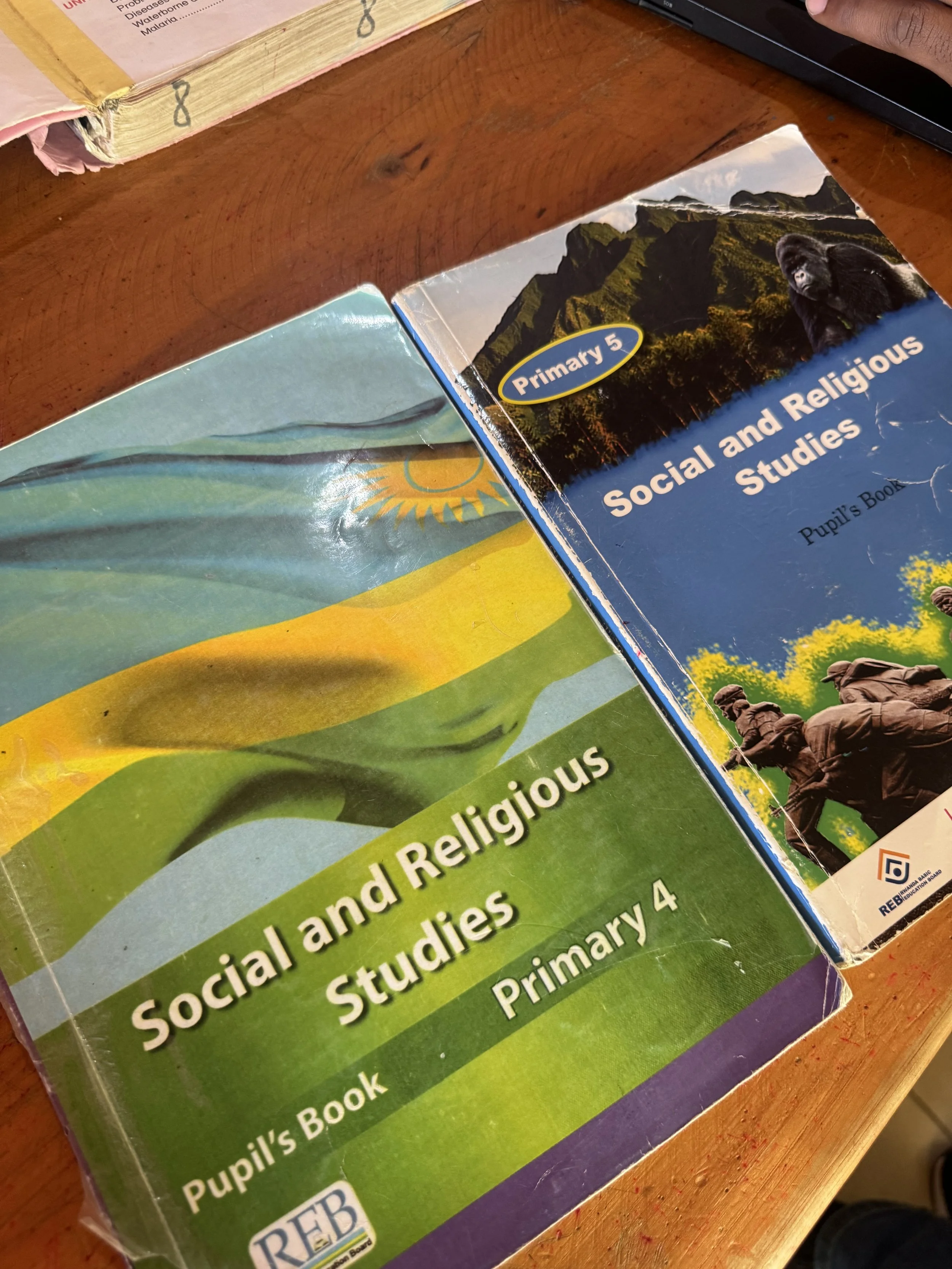
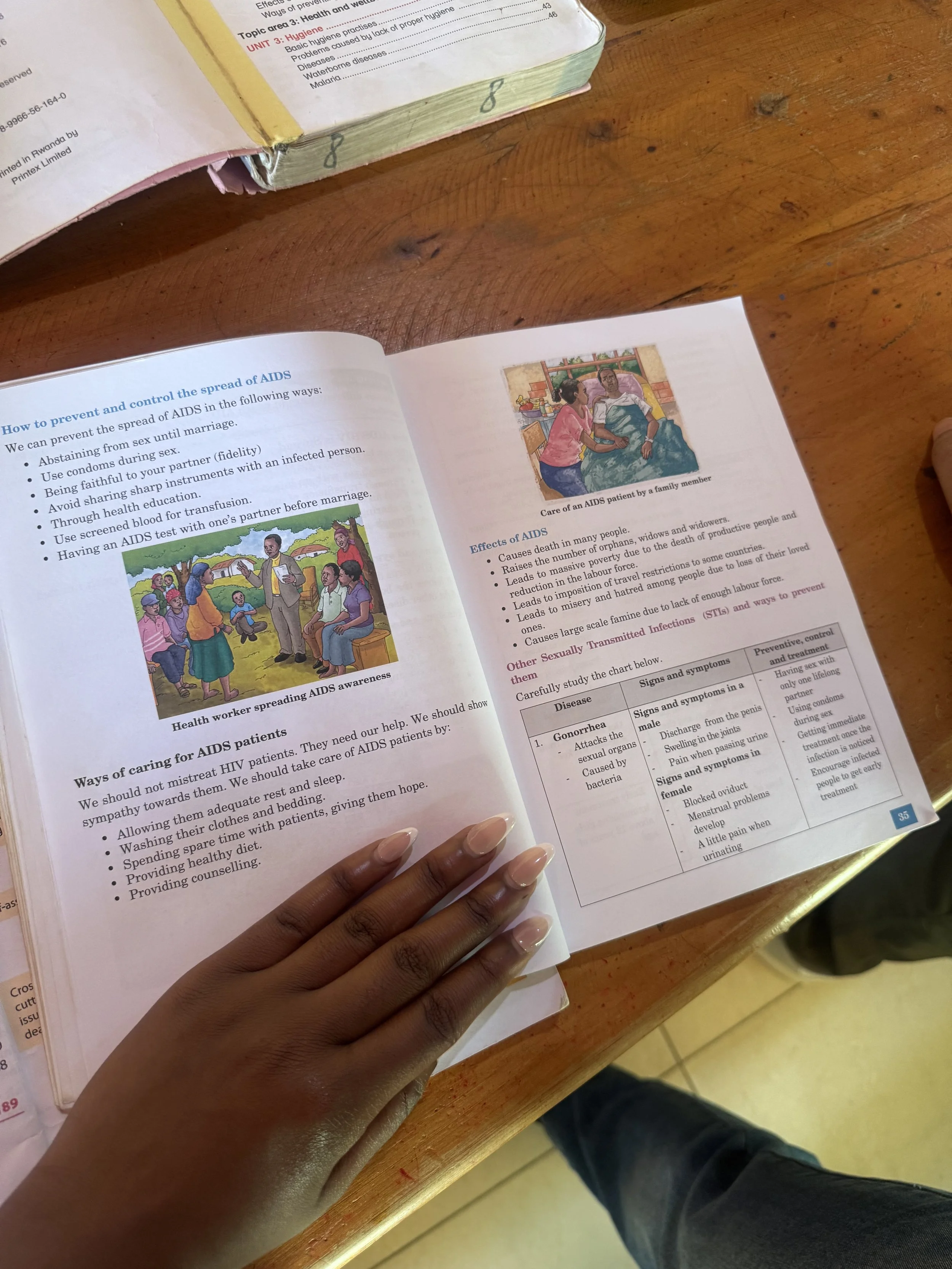
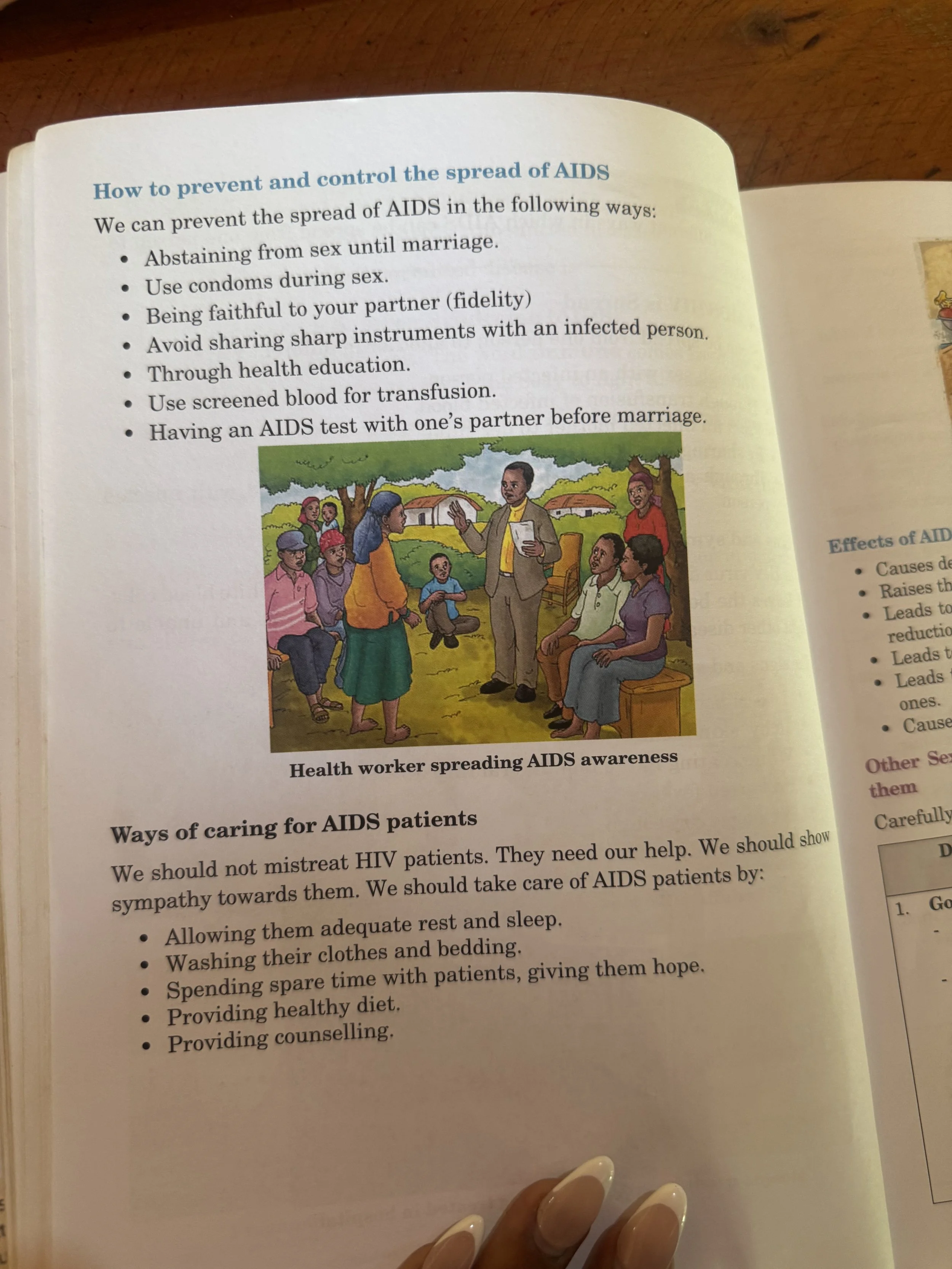
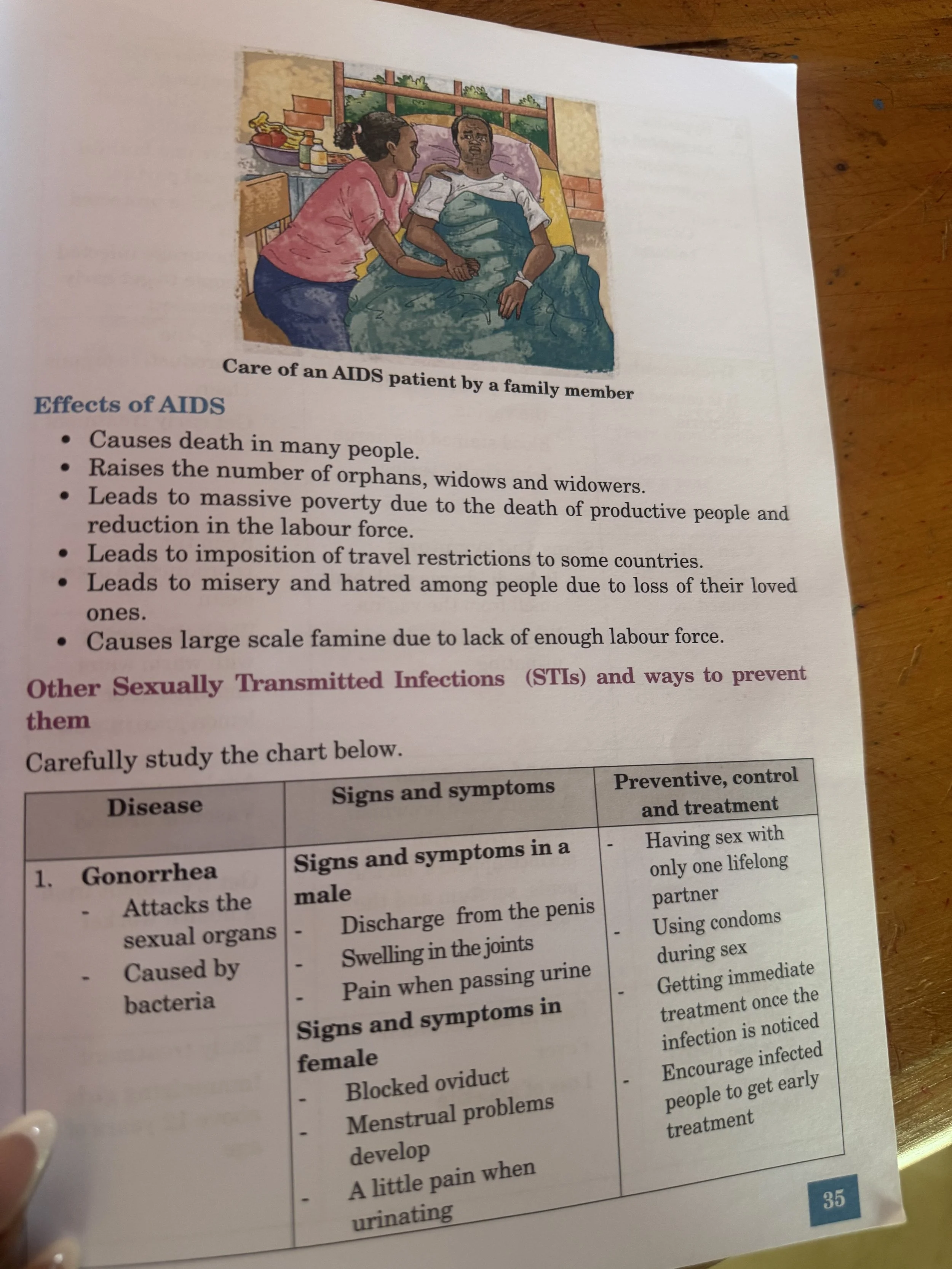


Day 6 - Hiking Huye Coffee Mountain
Today we hiked to Huye coffee mountain. It was such a beautiful experience. Such breathtaking views. The climbs though were no joke. It was so many hills!! They call Rwanda “the land of a thousand hills” for a reason.
Today, we learned about the history of Coffee and a bit of Rwanda history and its legends.
To begin with, we were met with such warm welcome when we arrived to Huye coffee mountain office. There was fresh coffee ready for us. My village loved the coffee.
Here are some highlights from my journey to Huye coffee Mountain.
Top two cash crops in Rwanda
. Tea
. Coffee
Growing coffee in Rwanda
• The best coffee grows at high elevations—around 1,500 to 2,500 meters above sea level.
• Coffee thrives in moderate climates, ideally between 13°C to 32°C. Not too hot, not too cold.
• Rainfall is key: a good coffee-growing region gets 1,200 to 2,300 mm of rain per year.
• After planting, the coffee tree takes 3 years before it starts producing beans.
• Around the 10-year mark, farmers cut back the trees to stimulate new growth—then wait another 2 years for the next harvest cycle.
• Farmers dig holes around trees to protect against soil erosion and help with natural irrigation.
Arabica Coffee: Quality vs Quantity
• Countries like Costa Rica, Brazil, and Hawaii focus on quantity.
• But for quality, countries like Ethiopia lead the way. Ethiopia even has a deep-rooted coffee ceremony culture, where about 50% of coffee is consumed locally and the other is exported.
Rwanda does not have a coffee tradition. Though it produces a lot of coffee, 97% is exported, 2% is for tourist and only 1% is for the local people. There have been efforts to introduce coffee culture in Rwanda and there have been slow progress.
The Enemies of Coffee
• Leaf rust disease: Turns leaves black and causes them to fall, reducing both quality and yield. Prevention? More fertilizer to boost the tree’s natural resistance.
• Antestia bug: A tiny insect that bites coffee beans and lays eggs, causing the beans to develop a potato-like taste. Farmers use a ground powder called pyrethrum, sprayed using hand pumps, to combat it.
Only the red cherries are mature enough to be picked. The yellow ones turn red as they ripen.
And get this—8 kg of coffee cherries only give 1 kg of export-quality green coffee!
The Legend of the Rock: Nyirankoko
We visited a special place—Nyirankoko Rock, also known as the “Owner of the Chicken Rock.” Here’s the legendary story behind it:
Once, Burundi invaded Rwanda, taking over the land. The King of Rwanda prayed to the gods and was told to use magic chickens to protect the nation. A brave Rwandan girl carried one of these chickens into Burundi.
A Burundian commander fell in love with her and convinced her to stay. He had no idea she was Rwandan. That night, she told him she needed to prepare the bed in keeping with her culture. She secretly placed the chicken underneath.
As they slept, the spirit magic awakened—killing the commander. The girl was later discovered and executed. But Rwanda received news of her success and honored her sacrifice by winning the war.
To this day, she is buried at Nyirankoko Rock, where warriors once met to plan battles. The rock stands as a symbol of courage and resilience.
We also got the great opportunity to make our own coffee. First, we grinded the coffee beans until it was a fine powder. We then put hot water in the powder and strained it.
Due to my caffeine sensitivity, I am unable to drink caffeine. However, I received great feedback from my cohorts; they all loved the coffee. The said that the coffee was not as runny/watery as the one in America.
A special shoutout to Eric for being our incredible guide and sharing so much about Rwanda’s coffee traditions and history.
Thanks for reading and being part of this adventure.



